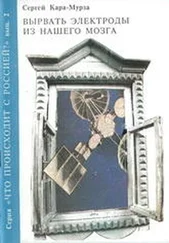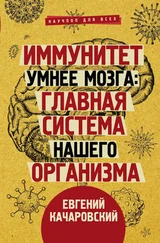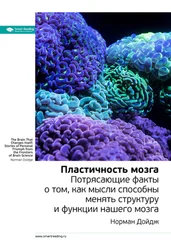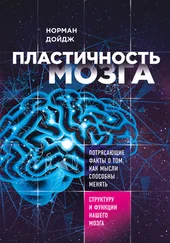3 H. Eysenck and A. Levey, ‘Conditioning, introversion-extraversion and the strength of the nervous system’, in V. D. Nebylitsyn and J. A. Gray (eds), Biological Bases of Individual Behavior, Academic Press , 1972, pp. 206–20
4 Y. Taki et al., ‘A longitudinal study of the relationship between personality traits and the annual rate of volume changes in regional gray matter in healthy adults’, Human Brain Mapping , 2013, 34 (12), pp.3347–53
5 K. L. Jang, W. J. Livesley and P. A. Vemon, ‘Heritability of the big five personality dimensions and their facets: A twin study’, Journal of Personality , 1996, 64 (3), pp. 577–92
6 M. Friedman and R. H. Rosenman, Type A Behavior and Your Heart , Knopf, 1974
7 G. V. Caprara and D. Cervone, Personality: Determinants, Dynamics, and Potentials , Cambridge University Press, 2000
8 J. B. Murray, ‘Review of research on the Myers-Briggs type indicator’, Perceptual and Motor Skills , 1990, 70 (3c), pp. 1187–1202
9 A. N. Sell, ‘The recalibrational theory and violent anger’, Aggression and Violent Behavior , 2011, 16 (5), pp. 381–9
1 °C. S. Carver and E. Harmon-Jones, ‘Anger is an approach-related affect: evidence and implications’, Psychological Bulletin , 2009, 135 (2), pp. 183–204
11 M. Kazén et al., ‘Inverse relation between cortisol and anger and their relation to performance and explicit memory’, Biological Psychology , 2012, 91 (1), pp. 28–35
12 H. J. Rutherford and A. K. Lindell, ‘Thriving and surviving: Approach and avoidance motivation and lateralization’, Emotion Review , 2011, 3 (3), pp. 333–43
13 D. Antos et al., ‘The influence of emotion expression on perceptions of trustworthiness in negotiation’, Proceedings of the Twenty-fifth AAAI Conference on Artificial Intelligence , 2011
14 S. Freud, Beyond the Pleasure Principle , Penguin, 2003
15 S. McLeod, ‘Maslow’s hierarchy of needs’, Simply Psychology, 2007 (обновлено в 2014), http://www.simplypsychology.org/maslow.html (ссылка актуальна по состоянию на сентябрь 2015)
16 R. M. Ryan and E. L. Deci, ‘Self-determination theory and the facilitation of intrinsic motivation, social development, and well-being’, American Psychologist , 2000, 55 (1), p. 68
17 M. R. Lepper, D. Greene and R. E. Nisbett, ‘Undermining children’s intrinsic interest with extrinsic reward: A test of the “overjustification” hypothesis’, Journal of Personality and Social Psychology ,1973, 28 (1), p. 129
18 E. T. Higgins, ‘Self-discrepancy: A theory relating self and affect’, Psychological Review , 1987, 94 (3), p. 319
19 J. Reeve, S. G. Cole and B. C. Olson, ‘The Zeigarnik effect and intrinsic motivation: Are they the same?’, Motivation and Emotion , 1986, 10 (3), pp. 233–45
20 S. Shuster, ‘Sex, aggression, and humour: Responses to unicycling’, British Medical Journal , 2007, 335 (7633), pp. 1320–22
21 N. D. Bell, ‘Responses to failed humor’, Journal of Pragmatics , 2009, 41 (9), pp. 1825–36
22 A. Shurcliff, ‘Judged humor, arousal, and the relief theory’, Journal of Personality and Social Psychology , 1968, 8 (4p1), p. 360
23 D. Hayworth, ‘The social origin and function of laughter’, Psychological Review , 1928, 35 (5), p. 367
24 R. R. Provine and K. Emmorey, ‘Laughter among deaf signers’, Journal of Deaf Studies and Deaf Education , 2006, 11 (4), pp. 403–9
25 R. R. Provine, ‘Contagious laughter: Laughter is a sufficient stimulus for laughs and smiles’, Bulletin of the Psychonomic Society , 1992, 30 (1), pp. 1–4
26 C. McGettigan et al., ‘Individual differences in laughter perception reveal roles for mentalizing and sensorimotor systems in the evaluation of emotional authenticity’, Cerebral Cortex , 2015, 25 (1) pp. 246–57
Глава 7. Обнимемся дружно!
1 A. Conley, ‘Torture in US jails and prisons: An analysis of solitary confinement under international law’, Vienna Journal on International Constitutional Law , 2013, 7, p. 415
2 B. N. Pasley et al., ‘Reconstructing speech from human auditory cortex’, PLoS-Biology , 2012, 10 (1), p. 175
3 J. A. Lucy, Language Diversity and Thought: A Reformulation of the Linguistic Relativity Hypothesis , Cambridge University Press, 1992
4 I. R. Davies, ‘A study of colour grouping in three languages: A test of the linguistic relativity hypothesis’, British Journal of Psychology , 1998, 89 (3), pp. 433–52
5 O. Sacks, The Man Who Mistook His Wife for a Hat, and Other Clinical Tales , Simon and Schuster, 1998
6 P. J. Whalen et al., ‘Neuroscience and facial expressions of emotion: The role of amygdala – prefrontal interactions’, Emotion Review , 2013, 5 (1), pp. 78–83
7 N. Guéguen, ‘Foot-in-the-door technique and computer-mediated communication’, Computers in Human Behavior , 2002, 18 (1), pp. 11–15
8 A. C. – y. Chan and T. K. – f. Au, ‘Getting children to do more academic work: foot-in-the-door versus door-in-the-face’, Teaching and Teacher Education , 2011, 27 (6), pp. 982–5
9 C. Ebster and B. Neumayr, ‘Applying the door-in-the-face compliance technique to retailing’, International Review of Retail, Distribution and Consumer Research , 2008, 18 (1), pp. 121–8
10 J. M. Burger and T. Cornelius, ‘Raising the price of agreement: Public commitment and the lowball compliance procedure’, Journal of Applied Social Psychology , 2003, 33 (5), pp. 923–34
11 R. B. Cialdini et al., ‘Low-ball procedure for producing compliance: commitment then cost’ , Journal of Personality and Social Psychology , 1978, 36 (5), p. 463
12 T. F. Farrow et al., ‘Neural correlates of self-deception and impression-management’, Neuropsychologia , 2015, 67, pp. 159–74
13 S. Bowles and H. Gintis, A Cooperative Species: Human Reciprocity and Its Evolution , Princeton University Press, 2011
14 C. J. Charvet and B. L. Finlay, ‘Embracing covariation in brain evolution: large brains, extended development, and flexible primate social systems’, Progress in Brain Research , 2012, 195, p. 71
15 F. Marlowe, ‘Paternal investment and the human mating system’, Behavioural Processes , 2000, 51 (1), pp. 45–61
16 L. Betzig, ‘Medieval monogamy’, Journal of Family History , 1995, 20 (2), pp. 181–216
17 J. E. Coxworth et al., ‘Grandmothering life histories and human pair bonding’, Proceedings of the National Academy of Sciences , 2015. 112 (38), pp. 11806–11
18 D. Lieberman, D. M. Fessler and A. Smith, ‘The relationship between familial resemblance and sexual attraction: An update on Westermarck, Freud, and the incest taboo’, Personality and Social Psychology Bulletin , 2011, 37 (9), pp. 1229–32
19 A. Aron et al., ‘Reward, motivation, and emotion systems associated with early-stage intense romantic love’, Journal of Neurophysiology , 2005, 94 (1), pp. 327–37
20 A. Campbell, ‘Oxytocin and human social behavior’, Personality and Social Psychology Review , 2010
21 W. S. Hays, ‘Human pheromones: have they been demonstrated?’, Behavioral Ecology and Sociobiology , 2003, 54 (2), pp. 89–97
22 L. Campbell et al., ‘Perceptions of conflict and support in romantic relationships: The role of attachment anxiety’, Journal of Personality and Social Psychology , 2005, 88 (3), p. 510
Читать дальше
Конец ознакомительного отрывка
Купить книгу












